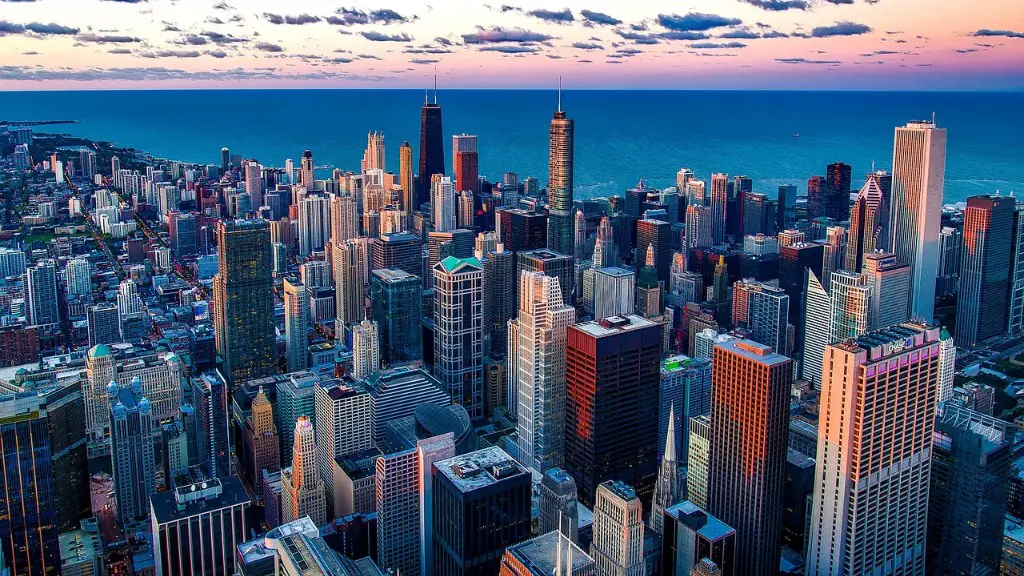How Architecture Helps Create a Sense of Place
Architecture has a special role in helping us feel connected to our environment. From a young age, most of us recognize the importance of good design. And, when it comes to architecture, the way a space looks, feels, and functions can shape our lives. The design of a home, a shopping mall, or a city park can make us feel connected to the world outside. We can be drawn in by the beauty of a building, and feel as if it is an extension of our own identity.
The choices we make when designing for a space can have a huge impact on how people interact and experience it. For instance, if an architect designed a public park with an ornate fountain and lush foliage, it would likely evoke a feeling of tranquility and relaxation. This type of environment is the ideal place to slow down and take in the natural beauty surrounding us. On the other hand, a drab, gray building with no attention to detail might make us feel disconnected to its surroundings. If the building simply looks nothing like our home or neighborhood, it might be difficult to enjoy being in the space.
The way a building or space is designed can also have an effect on our sense of identity. For example, a building in the style of International Modern might remind one of the advancements in technology and society, while an art nouveau structure might evoke a sense of enchantment and creativity. This ties into the idea of placemaking and how we shape our environment to reflect our vision of what we want it to look like.
The Role of Architects in Shaping a Community
Architects also play an important role in shaping the community and setting the tone for how a city looks, feels, and functions. By creating a well-thought-out, respectful design for a public space, an architect can help set the tone for how the space is used. A park designed by an architect might encourage people to come out and enjoy it, whereas without a well-thought-out design, the same area might go unused. Architects also often take into account how the building will fit into its surroundings and the cultural and historical context of the community when designing a building or space.
For example, when designing a building or structure in a historic area, an architect may use historical elements to ensure that it is in line with its surroundings. This can help create a sense of attachment to the community and allow people to connect to the space in a meaningful way.
The Benefits of a Structured Environment
Architecture helps to create a structured environment that can be both aesthetically and functionally pleasing. This can make it easier to move around a space, get tasks done, and feel safe in your surroundings. Good architecture can also help conserve space. An expertly designed building can help optimize an area, allowing more things to be fit within less space. This can be very helpful for cities with limited space, as it can help to reduce the number of buildings that need to be built.
The Importance of Accessibility in Architecture
In addition to these benefits, architects also play an important role in increasing accessibility for people with disabilities. By creating meaningful and thoughtful spaces, architects can help make sure that everyone has the opportunity to safely and easily access the things they need. This can be done by adding wheelchair ramps and other accessible features, as well as making sure that a building is wide enough to accommodate people of all sizes and abilities.
The Intersection of Architecture and Sustainability
Architecture is also important when it comes to sustainability. In recent years, more and more architects have been embracing sustainable design as a way to reduce their environmental impact and create energy-efficient structures. These sustainable structures often use renewable materials, such as bamboo and recycled plastics, to create homes and other buildings that are both aesthetically pleasing and use fewer resources. Additionally, architects can also utilize passive house design, which is designed to reduce energy consumption by relying on natural light and heat, as well as reducing air leakage.
The Blend of Art and Science in Architecture
Lastly, architecture is a unique blend of art and science. In addition to the technical aspects, such as understanding the physics of a structure and the strength of different materials, architecture also utilizes creative techniques to make a space look aesthetically pleasing. An architect must understand the relationship between a space and its environment and find ways to use materials and designs to bring the two together. This is what makes architecture so special—it is both an art and a science, and it has the ability to create beautiful and meaningful spaces.
The Mystery of Architecture and its Enduring Allure
When it comes to architecture, it is easy to see why it has such an enduring allure—it combines beauty, functionality, and sustainability into a single art form. Furthermore, it helps to create a sense of place and identity, allowing people to feel connected to the world around them. For these reasons, I love architecture—it is a perfect example of how design can help to create a meaningful, impactful, and (hopefully) lasting relationship between people and their environment.
Empathy, Humanity, and the Future of Architectural Design
With the ever-changing world, we must make sure to create design solutions with empathy, humanity, and a sense of responsibility. Architects should strive to create buildings and spaces that make people feel connected to their environment, while simultaneously doing their best to reduce their environmental impact. It is also important that architects think long-term and consider how their designs might affect future generations. By taking these things into consideration, architects can ensure that their designs are beneficial to both the people living in the now and the people living in the future.
Design as a Form of Self-Expression
Architecture is a form of self-expression, and it can be used to tell stories about people and places. Architects have the opportunity to creatively incorporate aspects of their environment into their designs to tell a richer, more detailed story. They can also use their designs to make bold statements about the values of a community, incorporate artwork or sculptures to make a space more inviting, and create a unique and memorable experience.
Domestic Architecture and the Everyday
Architecture is also important on a much smaller scale—domestic architecture. For many people, their home is their refuge and safe haven from the world. It is their own personalized space, and because of this, the design of a home is incredibly important.
When designing a home, an architect must think about function as well as aesthetics. In addition to providing a safe and secure place to live, a well-designed space can also make life easier for homeowners. Think about the convenience of a well-organized kitchen, having plenty of storage, or having a place to relax after a long day. All of these things can make a big difference in a person’s quality of life.
By creating well-thought-out and creative designs, architects can make sure that homeowners have a space that is both functional and beautiful. This way, they have both the peace and safety of a home, as well as the pleasure of having a beautiful, personal refuge.
The Impact of Architecture on Cities
Cities are some of the largest built environments, and architecture plays an important role in their development. Good design can make it easier for people to move around, find services, and feel safe. Buildings should be designed with the people in mind and should accommodate pedestrians, cyclists, and cars. Additionally, architects must also be mindful about how these large-scale developments will affect the surrounding area and the environment.
By incorporating sustainable design elements, architects can help to greatly reduce the environmental impact of cities. This could mean using energy-efficient materials, reducing water usage, and even utilizing green roofing systems. Additionally, these sustainable designs can help to reduce air pollution and water runoff.
Furthermore, by creating well-designed public spaces, architects can help cities become more vibrant and inviting. This could be in the form of public parks, pedestrian-friendly plazas, or green spaces. These things can help to create a sense of community and bring people out into the city.
The Role of the Community in Shaping Architecture
Community plays an important role in shaping the architecture of a city. Architects must take into consideration the local culture, history, and values of a community when designing a space or structure. This could mean using materials or designing a building in a style that is in line with the history of the community. Additionally, architects should work with the community to create designs that reflect the needs and desires of its residents. This could mean incorporating local art or stories into a design or ensuring that a building will be accessible to people of all abilities.
At the end of the day, good architecture must be meaningful and thoughtful. Architects have a unique opportunity to shape the world around them, and they should take full advantage of it. By creating designs that are aesthetically pleasing, physically functional, and socially responsible, they can make a real difference in their communities and the world.


